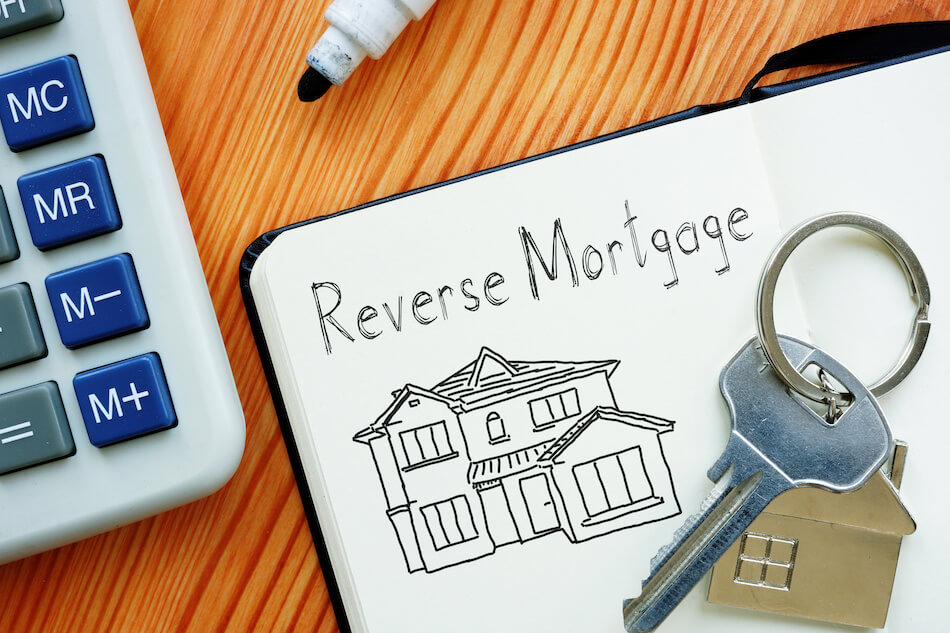What Is a Reverse Mortgage and How Does It Work?
A reverse mortgage is a loan that allows homeowners to access the equity in their homes while continuing to live in them. Instead of making monthly repayments, the loan balance grows over time and is repaid when the homeowner sells the home, moves out, or passes away.
-
Eligibility: In Canada, reverse mortgages are available to homeowners aged 55 or older. The amount you can borrow depends on your age, home value, and location.
-
How It Works: Homeowners receive payments in lump sums, monthly installments, or as a line of credit. Unlike traditional loans, no monthly repayment is required during the term of the loan.
Types of Reverse Mortgages
Reverse mortgages in Canada generally fall into two main categories:
-
Home Equity Conversion Mortgages (HECMs): These federally insured loans are offered by banks and financial institutions and come with strict regulations.
-
Proprietary Reverse Mortgages: These are private loans offered by lenders and may allow for higher borrowing amounts but come with fewer protections.
|
Type of Reverse Mortgage
|
Available In Canada?
|
Key Features
|
|
Home Equity Conversion Mortgage (HECM)
|
Yes
|
Federally regulated, safe, lower limits
|
|
Proprietary Reverse Mortgage
|
Yes
|
Private, higher loan amounts
|
Source: Canada Mortgage and Housing Corporation (CMHC), 2023
Reverse Mortgage Pros and Cons
Detailed Look: Reverse Mortgage Pros
Reverse mortgages offer several advantages for eligible homeowners seeking to improve their financial stability.
Access to Home Equity Without Moving:
No Monthly Payments:
-
Unlike traditional loans, reverse mortgages don’t require monthly payments. The loan is repaid only when the home is sold, the homeowner moves out, or passes away.
Flexible Payment Options:
-
Borrowers can choose how they receive their funds, whether as a lump sum, monthly payments, or a line of credit.
Income Supplement for Retirees:
-
Reverse mortgages provide an additional income stream that can be used for various purposes, including living expenses, medical bills, or home renovations.
Tax-Free Funds:
|
Pros
|
Explanation
|
|
Access Equity Without Selling
|
Stay in your home and unlock its value
|
|
No Monthly Payments
|
Loan repayment deferred until home sale or death
|
|
Tax-Free Income
|
Funds are not taxed and do not impact government benefits
|
Detailed Look: Reverse Mortgage Cons
While reverse mortgages offer unique benefits, they also come with significant drawbacks and risks that homeowners should carefully consider.
Accumulating Debt:
High Fees:
-
Reverse mortgages often come with higher upfront costs compared to traditional mortgages, including origination fees, closing costs, and insurance premiums.
Limited Borrowing Amounts:
Impact on Inheritance:
Reverse Mortgage Problems:
-
Some homeowners may face financial difficulties if they fail to pay property taxes, maintain insurance, or keep the home in good condition, potentially triggering foreclosure.
|
Cons
|
Explanation
|
|
Accumulating Interest
|
Increases debt over time, reducing home equity
|
|
High Upfront Fees
|
Includes origination, closing, and insurance costs
|
|
Reduced Inheritance for Heirs
|
Loan repayment reduces equity passed to beneficiaries
|
How Much Money Can You Get from a Reverse Mortgage?
The amount you can borrow depends on several factors:
-
Age of Borrower: Older homeowners can generally borrow more since the lender assumes a shorter loan term.
-
Home Value: The higher the value of your home, the more equity you can access.
-
Location: Property values in certain areas may influence the amount a lender is willing to provide.
Reverse Mortgage Fees and Costs
Reverse mortgages come with various fees that can add up quickly:
-
Origination Fee: A percentage of the loan amount charged by the lender.
-
Closing Costs: Includes appraisal fees, title insurance, and legal fees.
-
Mortgage Insurance: Protects the lender in case the loan balance exceeds the home’s value at the time of repayment.
Alternatives to Reverse Mortgages
While reverse mortgages may suit some homeowners, there are alternative options to consider:
-
Home Equity Line of Credit (HELOC): Offers lower interest rates and no upfront costs but requires monthly repayments.
-
Downsizing: Selling your home and moving to a smaller, less expensive property can free up equity without incurring debt.
-
Government Assistance Programs: Some provincial or federal programs provide financial aid to seniors without requiring home equity loans.
Frequently Asked Questions
Q1: What are the main disadvantages of reverse mortgages?
A1: The main disadvantages include high fees, accumulating interest, reduced inheritance for heirs, and the risk of foreclosure if property obligations aren’t met.
Q2: How much money can I get from a reverse mortgage in Canada?
A2: Borrowers can typically access 55% to 65% of their home’s equity, depending on factors like age, property value, and location.
Q3: Are reverse mortgages a good idea for retirees?
A3: Reverse mortgages can be beneficial for retirees seeking additional income but come with risks like high costs and reduced home equity. Carefully weigh the pros and cons before deciding.
Q4: What fees are associated with reverse mortgages?
A4: Fees include origination costs, closing fees, mortgage insurance, and interest, which can significantly reduce the homeowner’s remaining equity.
Q5: What alternatives exist to reverse mortgages?
A5: Alternatives include HELOCs, downsizing, or leveraging government assistance programs designed for seniors.
Reverse mortgages can be a valuable financial tool for eligible homeowners seeking to unlock their home equity. However, it’s crucial to understand their fees, risks, and impacts on inheritance. By carefully evaluating your needs and exploring alternatives, you can make the right decision for your financial future in {city}.

